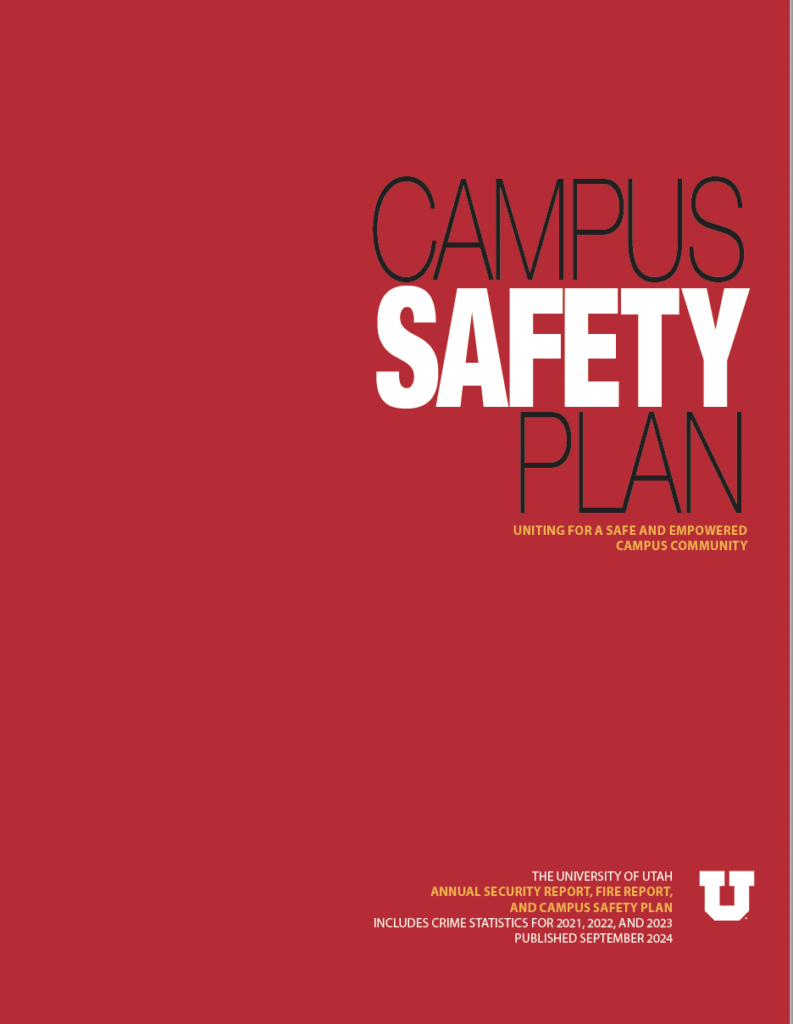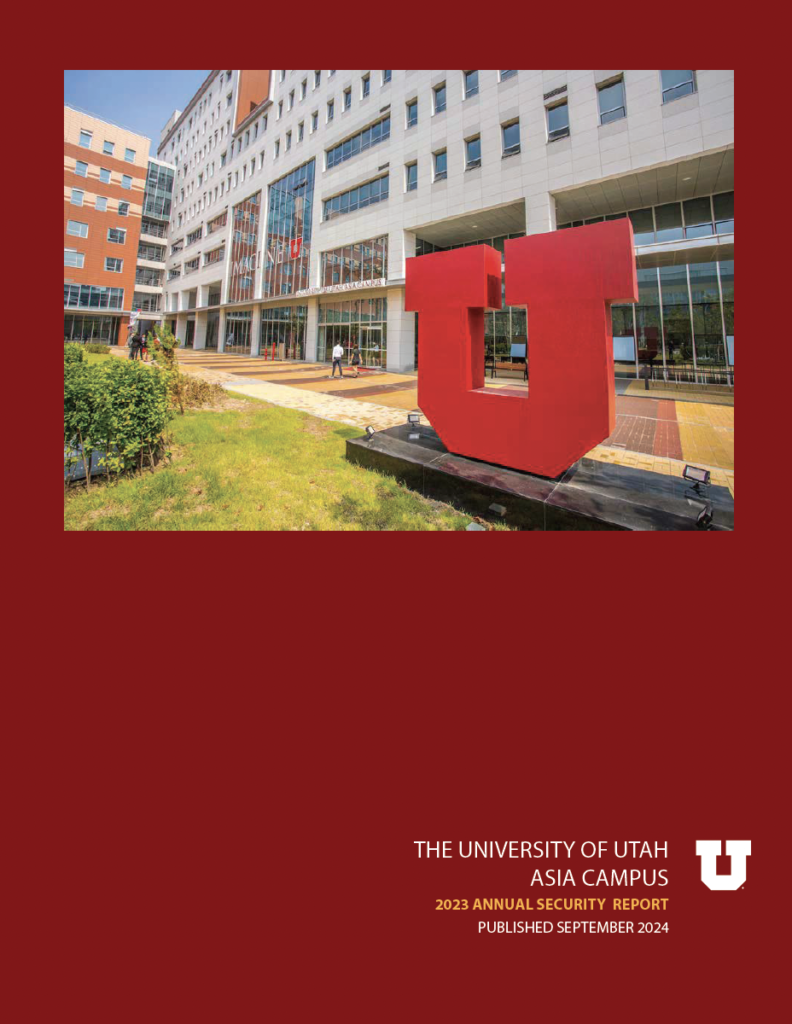Jeanne Clery Act
What is the Clery Act?
Signed into law in 1990, the Jeanne Clery Disclosure of Campus Security Policy and Campus Crime Statistics Act or Clery Act requires all colleges and universities that participate in federal financial aid programs to keep and disclose information about crime on and near their respective campuses.
What is the Annual Security and Fire Safety Report?
The U produces two Annual Security and Fire Safety reports, one for Utah Main Campus and one for the Utah Asia Campus. They include statistics about criminal offenses, hate crimes, arrests and referrals for disciplinary action, and Violence Against Women Act offenses. They also provide information about safety and security-related services offered by the University of Utah.
The Annual Security and Fire Safety Report is created annually in compliance with the Jeanne Clery Disclosure of Campus Security Policy and Campus Crime Statistics Act, commonly referred to as the Clery Act. The act seeks to standardize campus crime reporting so students, staff, faculty, and visitors can learn about institutions' crime histories. The report also fulfills the State of Utah requirement for a Campus Safety Plan.
Statistics from the U are compiled from University of Utah Police reports and complaints; reports from Campus Security Authorities (CSA), who are individuals with significant responsibility for campus and student activities, such as resident assistants, coaches, and club advisors, among others; disciplinary referrals; and local law enforcement agencies.
Crime categories included in the report
Institutions of higher education must include five distinct categories of crime in their Annual Security and Fire Safety Report crime data:
Criminal Offenses
- Criminal homicide: murder and non-negligent manslaughter, manslaughter by negligence: The Willful (non-negligent) killing of one human being by another.
- Sexual assault: rape, fondling, incest, statutory rape: Any sexual act directed against another person, without the consent of the victim, including instances where the victim is incapable of giving consent. Any incident that meets the definition of rape, fondling, incest, or statutory rape is considered a sexual assault or sex offense under the Clery Act.
- Robbery: The taking or attempting to take anything of value from the care, custody, or control of a person or persons by force or threat of force or violence and/or by putting the victim in fear.
- Aggravated assault: An unlawful attack by one person upon another for the purpose of inflicting severe or aggravated bodily injury. This type of assault is usually accompanied by the use of a weapon or means likely to produce death or great bodily harm.
- Burglary: The unlawful entry of a structure to commit a felony or a theft.
- Motor vehicle theft: The theft or attempted theft of a motor vehicle.
- Arson: Willful or malicious burning or attempt to burn with or without intent to defraud a dwelling house, public building, motor vehicle or aircraft, personal property of another, etc.
Hate Crimes (any of the offenses mentioned above, and any incidents of)
- Larceny-theft
- Simple assault
- Intimidation
- Destruction/damage/vandalism of property
VAWA (Violence Against Women Act) Offenses
- Domestic violence
- Dating violence
- Stalking
Arrests and Referrals for Disciplinary Action
- Weapons law violations
- Drug abuse violations
- Liquor law violations
Hazing Offenses
Hazing: An any activity expected of someone joining or participating in a group that humiliates, degrades, abuses, or endangers them, regardless of their willingness to participate.
Crime reporting geography
Crimes included in the Annual Security and Fire Safety reports are not strictly limited to events that occur on campus or within campus buildings and residences.
Institutions must also include statistics for crimes that occur:
On-campus property public property: Any building or property owned or controlled by the University within the same reasonably contiguous geographic area and used by the institution n direct support of, or in a manner related to, the institution's educational purposes including residence halls. Any building or property that is reasonably contiguous to the campus that is owned by the institution but controlled by another person, if frequently used by students, and supports institutional purposes (such as a food or other retail vendor).
Non-campus buildings and property: Any building or property owned or controlled by an officially sponsored student organization. Any building or property owned or controlled by the University that is used in direct support of, or in relation to, the institution's educational purposes, if frequently used by students, and is not within the same reasonably contiguous geographic area of the institution.
Public Property Within or Immediately Adjacent to the Campus: All public property, including thoroughfares, streets, sidewalks, and parking facilities, that is within the campus, or immediately adjacent to and accessible from the campus.
Campus Security Policy here.
Clery Boundaries Map here.



